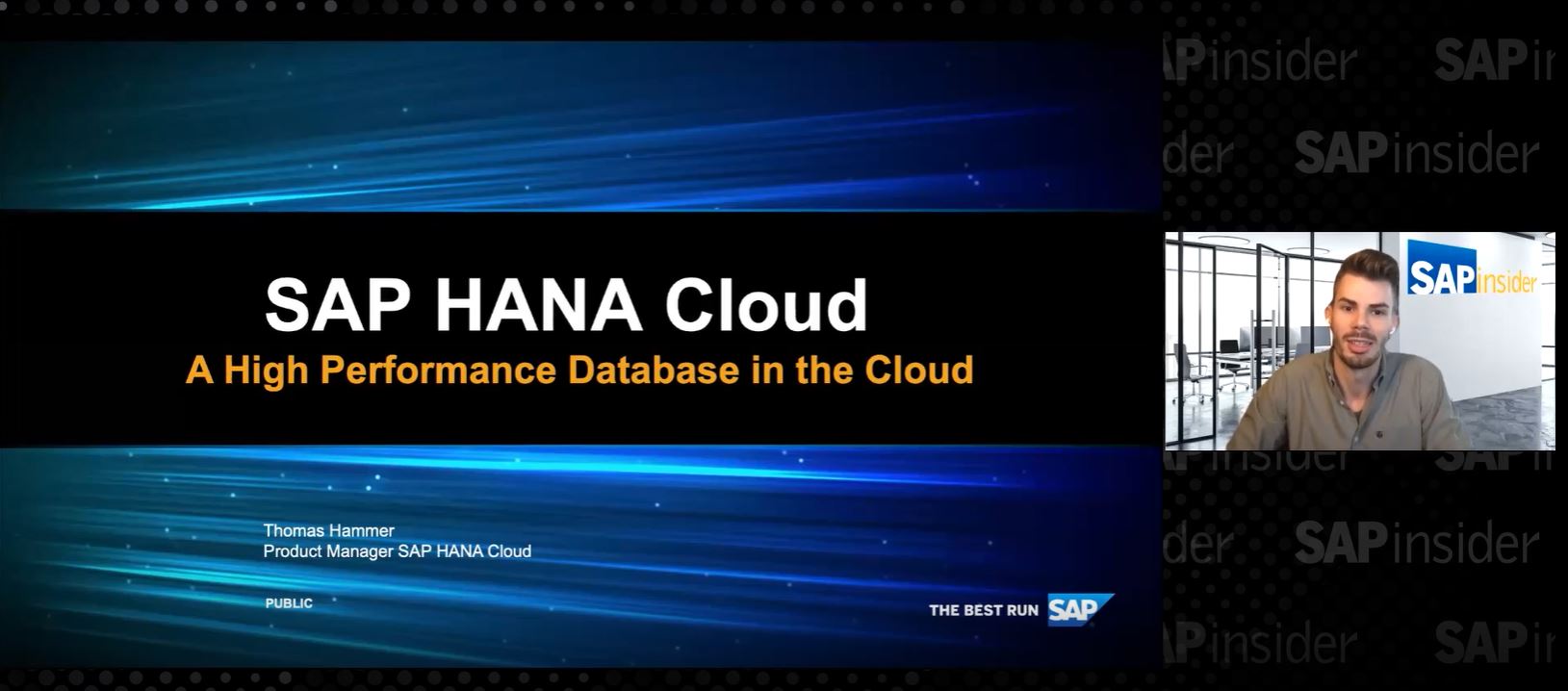Balance Governance and Flexibility with SAP HANA Enterprise Cloud
Take a Controlled Journey to SAP S/4HANA Cloud
During SAP’s Q4 earning call in January 2018,1 SAP CEO Bill McDermott emphasized the importance of SAP S/4HANA Cloud to SAP’s overall company strategy. “[SAPS/4HANA Cloud is] the lead story in the company,” said McDermott. “And if you think about global customer operations and all geographies and industries around the world, this is the biggest focus and has the highest ceiling of any product in the portfolio.” With cloud revenue expected to overtake license revenue for the first time, the writing is on the wall for SAP and its customers: The future is in the cloud.
The reasons for this direction should come as no surprise to any business vying to win market share in a hypercompetitive digital economy. Immediacy is paramount; the enterprise must meet evolving customer expectations for shortened service and delivery times.This requires agility, flexibility, and a recognition that data is the lifeblood of the digital enterprise. Turning data into insight to become a true data-centric organization is a main driver for cloud migrations. In part, this is because organizations know that the cloud is the quickest way to bring their infrastructure in line with industry trends —such as machine learning and Internet of Things (IoT) technology — that companies are leveraging as competitive differentiators to revamp business models.
Moving from concept to action in a transition to the cloud, however, is not a cut-and-dried scenario, least of all for a multinational corporation with a highly customized on-premise infrastructure. The enterprise must consider a host of factors, beginning with the level of governance it is willing to cede in exchange for greater flexibility.
Explore related questions
This is where SAP HANA Enterprise Cloud — SAP’s private, fully managed cloud service on the SAP S/4HANA environment — comes into play to help drive that journey to SAP S/4HANA Cloud for new and existing SAP customers with a controlled, deliberate, and guided path to jump-start digital transformation.
A Starting Point for SAP S/4HANA
These transformational journeys differ based on desired outcomes and each customer’s starting point. For existing SAP customers with a complex set of highly customized legacy applications, the path to an intelligent enterprise with SAP S/4HANA begins with a lift and shift of their SAP and non-SAP on-premise environments. Customers can bring their existing licenses before eventually converting to a subscription software licensing model.
The benefits of moving to SAP S/4HANA in a private, managed cloud is also attractive for net-new or greenfield customers who want to move to SAP S/4HANA to reap the benefits of machine learning, IoT, and other emerging technologies. For these customers, the journey starts by porting their data; SAP will create a landscape directly in the cloud using a public cloud provider — such as Amazon Web Services, Microsoft Azure, or Google Cloud Platform (which should be certified for SAP workloads by Q4 2018).
Industry reference architecture, best practices, localizations, and accelerators will be incorporated to allow for a rapid design-to-deploy implementation.
From big-bang deployments to staggered implementations targeted at immediate business results, the common denominator is that the choice belongs to the customer. Many customers approach SAP HANA Enterprise Cloud to “test the waters” and find out what it means from an operational and change management perspective for SAP to manage their environment before deciding to bring over more of their landscape.
SAP Does the Heavy Lifting
For many reasons, moving to a highly secure, cloud-ready state on an SAP S/4HANA environment hosted by SAP is more sensible than going through a classic hosting partner. First, as the native vendor of the software, SAP has the unmatched skillsets to best operate and manage the environment, ensuring that the risks typically associated with updating, patching, and maintaining the software — or even consuming newer innovations from SAP — are all offloaded into capable hands.
Second, SAP HANA Enterprise Cloud is the only private, managed cloud environment where the customer is consuming all SAP software in a subscription or bring-your-own license (BYOL) model and reducing expenses by converting significant IT costs into an operating expense model. With SAP HANA Enterprise Cloud, there is no need to procure hardware or infrastructure that classic hosting partners typically require to be up-and-running from day one.
Third, with SAP HANA Enterprise Cloud, customers pay only for what they consume; the managed environment can scale-up or scale-down as necessary, so there will be a cost reduction if a system that requires 2TB of SAP HANA today only requires 1TB in six months. Scalability is especially attractive when viewing SAP HANA Enterprise Cloud as a stepping stone to SAP S/4HANA Cloud. When a customer decides to migrate some of its applications to SAP S/4HANA Cloud or another software-as-a-service (SaaS) model, no commitments are broken: The monthly cost simply decreases accordingly and the appropriate subscription license is already in place.
Unmatched flexibility extends to the customer’s choice of an infrastructure provider. SAP HANA Enterprise Cloud does not mandate that a customer must run its environment in an SAP data center, even if that remains the preferred option. Rather, if an existing platform strategy requires use of an infrastructure from a public cloud provider, that is a choice left to the customer. Either way, SAP will manage the customer’s landscape in the transition to the cloud.
Breaking Down Barriers
Customers value the flexibility that SAP HANA Enterprise Cloud offers because it provides them with a guided path moving from a highly customized, on-premise environment to a cloud-ready state. Some customers may be concerned about ceding the maintenance and provisioning of customized legacy systems, but the reality is that many customers often discover that years or decades of modifications aren’t as vital to running certain business processes as they previously thought. Customers can evaluate which modifications are truly necessary and can then decide whether SAP S/4HANA Cloud can meet specific business requirements — all while benefiting from a cloud operating model on the SAP S/4HANA platform. And, if a customer finds that it does need a certain modification,SAP S/4HANA can provide a seamless re-deployment of those extensions on SAP Cloud Platform without touching the core, thus ensuring timely updates on core software and, ultimately, facilitating a seamless transition to SAPS/4HANA Cloud.
With a single point of accountability, this end-to-end integration between SAP HANA Enterprise Cloud, services,and support across SAP Cloud Platform and a range of SaaS products simplifies processes further and is yet another reason why companies should consider the move to SAP HANA Enterprise Cloud.
You Set the Pace
With trends favoring the cloud for future business models, customers must take steps now toward cloud adoption or risk being left behind. According to IDC 2, SAP HANA Enterprise Cloud combines the benefits of on-premise and cloud. Similar to dedicated implementations that a customer might experience on-premise, the application can be customized to fit an organization’s unique requirements. But similar to public cloud, the customer can transfer responsibility for ongoing management of the application and its infrastructure to the company that wrote the software and understands it best. By leveraging SAP’s private, fully managed cloud service on the SAPS/4HANA platform, customers can set their own pace for innovation and create a personalized cloud journey. For more information, visit https://www.sap.com/products/hana-enterprise-cloud.html.
1 Visit https://seekingalpha.com/article/4141369-saps-sap-ceo-william-mcdermott-q4-2017-results-earnings-call-transcript for a transcript of SAP’s Q4 earning call. For SAP’s Q4 2017 statement, visit https://www.sap.com/docs/download/investors/2017/sap-2017-q4-statement.pdf. [back]
2 Mahowald, Robert P., Morris, Henry D., IDC, “SAP HANA Enterprise Cloud: A Managed Approach to Deploying SAP S/4HANA”. 2016. [back]




